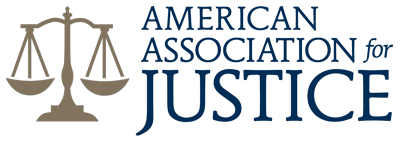When involved in a motorcycle accident in New York, preserving evidence is one of the most important steps you can take to protect your rights and build a strong case. Whether you are seeking compensation for injuries, vehicle damage, or other losses, the strength of your case largely depends on the quality and amount of evidence you are able to present. This evidence helps establish the facts of the accident, who was at fault, and the extent of your damages. Ensuring that this information is collected and maintained properly is crucial to your success in any legal proceedings that may follow. At, Andrews, Bernstein & Maranto, PLLC , we are here to guide you through the legal process and help you navigate the complexities of your case.
Understanding the Importance of Preserving Evidence
After a motorcycle accident, you might feel overwhelmed and unsure of what to do next. While it is natural to focus on getting medical treatment and making sure you are physically okay, the evidence from the scene of the accident can start to fade quickly. Physical evidence can be destroyed, witnesses may forget key details, and vehicles may be repaired or scrapped. This is why it is important to act quickly to gather and preserve anything that can help prove your case later on. The goal is to create a clear picture of what happened, why it happened, and how it affected you.
Preserving evidence can help show who was responsible for the accident. In motorcycle cases, other drivers may try to shift the blame onto the motorcyclist, arguing that the motorcyclist was speeding or driving recklessly. However, evidence can help counter these claims and provide a more accurate account of the accident. In addition to proving liability, preserved evidence is necessary to demonstrate the extent of the injuries you sustained. This can be essential when pursuing compensation for medical bills, lost wages, and pain and suffering.
Collecting Physical Evidence at the Scene of the Accident
If you are physically able, collecting physical evidence immediately after the accident is one of the most important steps you can take. One key form of evidence is the damage to your motorcycle. Photographs of your motorcycle, the other vehicles involved, and any debris on the road can provide valuable information about how the accident happened. Take pictures from multiple angles, making sure to capture any skid marks, broken parts, and the overall scene. These images will help paint a picture of the crash site before any changes occur.
Additionally, it is a good idea to gather any pieces of your motorcycle that may have broken off during the accident. Even something as small as a piece of plastic from a side mirror can be used as evidence later. This physical evidence can help accident reconstruction professionals determine the events leading up to the collision.
Make sure to also take photos of any injuries you sustained at the time of the crash. While you may have medical records and doctors’ reports, images of visible injuries can be powerful evidence. Documenting these injuries right after the accident can provide a clear timeline of when the injuries were sustained and their severity.
The team is very personable, patient and empathetic with their clients. They are upfront with you and will explain the entire process with you, they never lead you to believe otherwise, they tell you like it is and will not sell you a million dollar dream. Trust in Andrews, Bernstein & Maranto, PLLC, they work for you and he looks out for your best interest.” - Jane D.
Gathering Witness Information
Eyewitnesses can provide valuable evidence in a motorcycle accident case. Their testimony can help back up your version of events, especially if the other party disputes your claims. If there were people who saw the accident, try to collect their contact information before they leave the scene. This includes their names, phone numbers, and addresses. Even if they seem reluctant to get involved, explaining how important their testimony could be in determining fault might encourage them to help.
Witnesses can often provide details that you might not have noticed or remembered due to the trauma of the accident. For instance, they may have seen the other driver speeding or not paying attention to the road. Their accounts can add a layer of credibility to your own testimony and help fill in any gaps in the story.
When witnesses agree to share what they saw, make sure to write down or record their statements as soon as possible. Memories fade quickly, and people may forget important details over time. The sooner you document what they say, the better it will be for your case.
Securing Police and Accident Reports
After a motorcycle accident, it is crucial to contact law enforcement and have an official accident report created. The police report is often one of the most important pieces of evidence in a motorcycle accident case. It contains key details such as the time and location of the accident, the officers’ observations, and any citations or charges issued at the scene. It may also include statements from you, the other driver, and any witnesses.
Obtaining a copy of the police report can be an important step in preserving evidence. This report is often seen as an objective account of the accident, and it can be difficult for either party to dispute what is written in it. Make sure to review the report carefully for accuracy. If there are any mistakes or omissions, contact the law enforcement agency and request that corrections be made. Having an accurate police report can significantly strengthen your case.
Should I Take The First Settlement Offer? Steps to File a Personal Injury ClaimRelated Videos
In addition to the police report, any other official documents, such as insurance reports or medical evaluations, should be kept and stored safely. These documents can help support your claim and provide further evidence of your injuries and the damages you have suffered.
Using Medical Records and Doctor’s Reports
Medical records are essential when proving the extent of injuries in a motorcycle accident case. After the accident, it is important to seek medical attention as soon as possible. Even if you feel fine at first, some injuries may not show symptoms immediately. Getting a thorough medical examination not only ensures your health and well-being but also provides a record of your injuries.
The medical records you receive from doctors, hospitals, or clinics serve as evidence of the treatment you needed after the accident. These records include details such as the types of injuries you sustained, the treatments you received, and the projected long-term effects of your injuries. If your case goes to court, having medical records that clearly outline your injuries can be crucial to securing compensation for your medical expenses.
It is also a good idea to keep any receipts or bills related to your medical treatment. These financial records can help show the economic impact the accident has had on you and will play a key role in determining the amount of compensation you are entitled to.
Verdicts & Settlements
Preserving Video and Digital Evidence
In today’s world, many motorcycle accidents are captured on video. Traffic cameras, security cameras, and even dashboard cameras from nearby vehicles may have recorded the incident. If you believe there may be video footage of the accident, act quickly to obtain it. Video evidence can provide a clear, unbiased view of how the accident occurred, which can be invaluable in proving liability.
It is important to contact any businesses or individuals who may have video footage as soon as possible. Many cameras record over their data after a certain period, and once the footage is gone, it cannot be recovered. If you are unable to obtain the video yourself, a lawyer can help you submit a formal request to preserve this evidence before it is erased.
In addition to video evidence, digital records such as GPS data, phone records, and social media posts can also be used in a motorcycle accident case. For example, if the other driver was using their phone at the time of the accident, this could be crucial evidence in establishing fault. Gathering these digital records early can help build a stronger case in your favor.
Keeping a Personal Journal of the Accident
Another effective way to preserve evidence after a motorcycle accident is by keeping a personal journal. In this journal, you can document your memories of the accident, how it has affected your life, and any physical or emotional pain you are experiencing. Writing down your thoughts as soon as possible after the accident ensures that you do not forget important details over time.
In addition to recording your memory of the crash, keep track of your recovery process. Note how your injuries are healing, any ongoing treatments or therapies, and how the accident has impacted your day-to-day life. This personal journal can serve as a powerful piece of evidence when it comes to showing the emotional and physical toll the accident has taken on you.
In the aftermath of a motorcycle accident, gathering and preserving evidence can be a daunting task, especially when you are focused on recovering from your injuries. The legal process can be complicated, and missing or improperly preserved evidence can weaken your case. This is why it is so important to have a knowledgeable team of legal professionals on your side.
The attorneys at Andrews, Bernstein & Maranto, PLLC are here to help you through every step of the process. They understand the challenges that motorcycle accident victims face and will work tirelessly to ensure that your rights are protected. If you or a loved one has been involved in a motorcycle accident in New York, do not hesitate to reach out to Andrews, Bernstein & Maranto, PLLC today. Their experience and dedication can make all the difference in your case.














